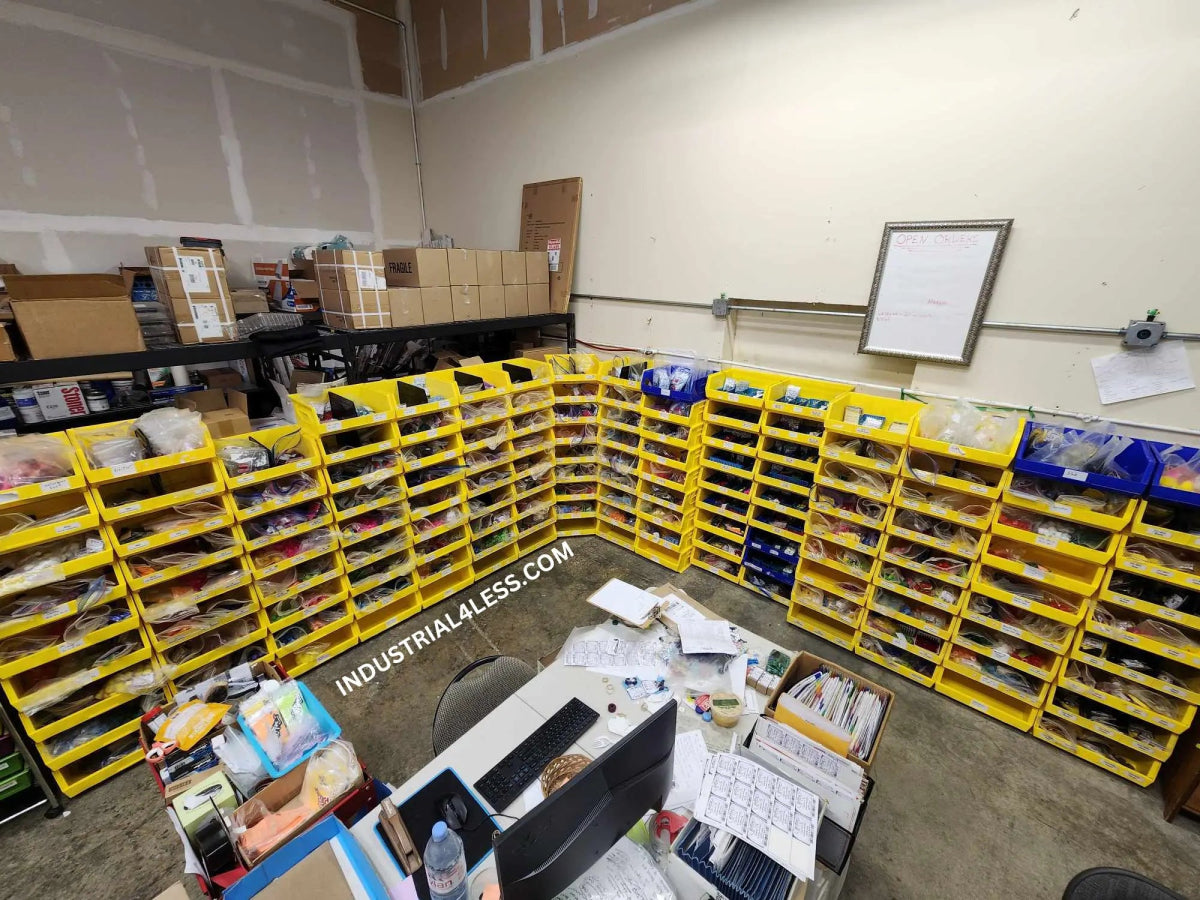If you run a business that handles a large number of small parts or components—such as an e-commerce company, a manufacturer, a repair shop, or a distributor—you’ve likely faced challenges like slow order processing, difficulty locating items, or cluttered workspaces. These issues can lead to increased labor costs, customer dissatisfaction, and lost revenue.
Implementing an organized small parts picking system can help solve these problems by improving efficiency, maximizing space, enhancing accuracy, and speeding up order fulfillment. By adopting a streamlined setup, your business can reduce errors, boost productivity, and maintain a high level of customer satisfaction.
How to Set Up an Efficient Small Parts Order Picking Operation in Your Warehouse
Step 1: Choose the Right Bins
Select stackable, open-front bins that allow easy access to small parts. Look for durable plastic bins that can withstand daily handling and are available in bright colors for easy identification.

Step 2: Organize Bins by Product Type
Arrange bins in a U-shaped or straight-line configuration around workstations to minimize movement. Group bins by product category or SKU (e.g., bushings, bearings, wheels) and clearly label each bin to speed up the picking process.
Step 3: Optimize Your Layout
Place bins on the ground in a way that allows for efficient use of space, ensuring they are easy to reach without bending or straining. Organize them so that frequently picked items are closer to the workstation to reduce the time spent walking back and forth.
Step 4: Create Dedicated Workstations
Set up workstations within easy reach of the bins. Include all necessary tools, packing materials, and computer systems for processing orders. Ensure ergonomic design to enhance worker comfort and efficiency.
Step 5: Implement a Clear Labeling System
Use large, clear labels for each bin to indicate the type and quantity of items stored. This will help workers quickly identify and pick the correct products, reducing errors and speeding up the process.
Step 6: Use a Digital Inventory Management System
Integrate a digital inventory management system that syncs with your labeling to track stock levels, automate reordering, and improve accuracy in order fulfillment.
Step 7: Regularly Review and Adjust the Setup
Periodically review the setup to identify bottlenecks or inefficiencies. Adjust the bin placement, workstation location, and workflow based on observed needs and feedback from staff.
Additional Tips:
- Maintain Cleanliness: Regularly clean bins and workstations to prevent clutter and maintain a smooth workflow.
- Use Color-Coding: Consider color-coding bins to differentiate product types or priority levels.
- Monitor Performance: Track order picking times and accuracy rates to identify areas for further improvement.
By following these steps, you can create a streamlined, efficient order-picking operation that minimizes errors, reduces labor costs, and improves overall productivity in your warehouse.

